Bisalhães: the clay that pulses at the rhythm of Vila Real
Add MyTrip
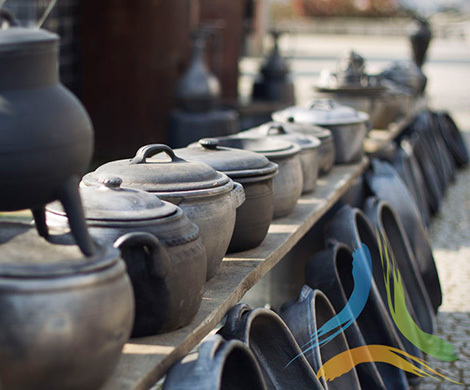
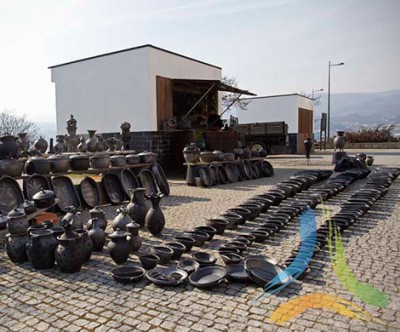
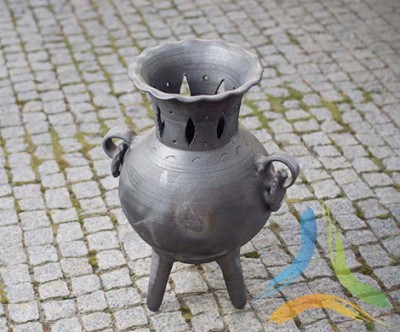
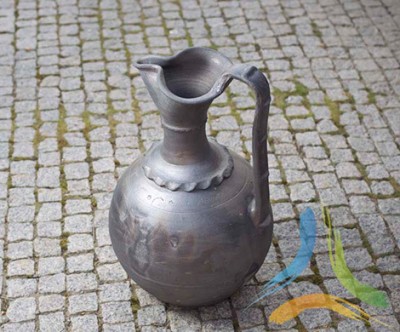
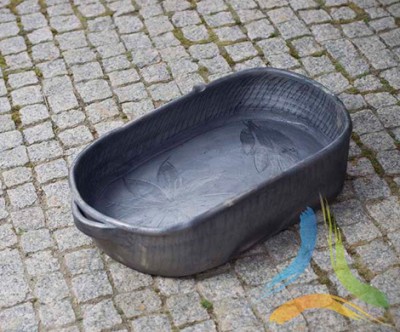
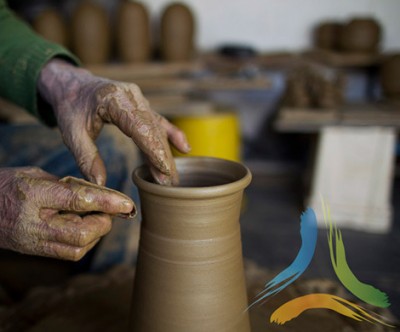
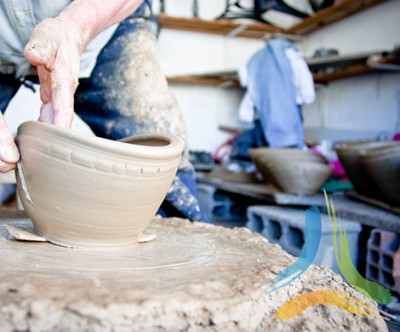
41.30179758074601
-7.751969957397478
Bisalhães: the clay that pulses at the rhythm of Vila Real
The voice takes on a cheerful tone and does not falter as it intones the popular verses: “Vila Marim for the pans / Quintela for the pots / Mondrões for the ill-baked / Bisalhães for the well-made”. Manuel Martins, 79, is the oldest of the...
Presentation
The voice takes on a cheerful tone and does not falter as it intones the popular verses: “Vila Marim for the pans / Quintela for the pots / Mondrões for the ill-baked / Bisalhães for the well-made”. Manuel Martins, 79, is the oldest of the four potters who keep alive the art of the Bisalhães clay, a symbol of Vila Real handicrafts.
If it is coarse and lustreless, the pottery is called “churra” (baking dish, pot, pitcher, bowl for rice), whereas “gogada” or “de luxe” is refined and flawless (trick jars, canteen-type and threaded cruses, ringed vessels, jar with handle, pitcher, small pots). They share the black colour and the Bisalhães roots, a village eight kilometres from Vila Real.
The parishes of Lordelo, Mondrões, Vila Marim and Parada de Cunhos were once one of the most important pottery centres in Northern Portugal.
The first references to potters in Mondrões (a parish within Bisalhães) date back to 1709, reporting the existence of two. These increased to 55 in 1947/48. Today, the number of active potters can be counted on the fingers of one hand.
Manuel’s hands have been moulding clay for more than six decades. He learned the craft from his father, but “now it will die down because there’s no-one to learn it.”
A guelling, time-consuming process
Clay is no longer quarried in Parada de Cunhos, so potters have to buy it in Chaves. Done with a wooden mallet, clay pounding is “very tiring”.
Reduced to powder, the clay is filtered out with a sieve and “kneaded like bread dough”, to form the slip. “After manufacturing, it is grey. After drying, it becomes yellowish, and then black as it leaves the kiln,” he summarises.
Under the cover of the low wheel, Manuel wraps his hands around the clay, brings it upward with the rib (a wooden strip) and moulds it with a wet cloth. Sometimes, he disengages his left hand to give a good toss onto the wheel and the piece spins and spins around.
Finally, as Guerra Junqueiro wrote, “from vile clay, the wonders of pottery.” The small pitcher is cut through the base with the cut-off wire (a guitar string, horsehair, sewing thread or hair, depending on the piece) and set next to others.
“I take the pieces home in a basket and my wife etches those patterns with a small pebble, called the “gogo” (flowers, leaves, stars, spirals, zigzags).” At this stage, the piece must be half-dry or, as they say, still “young”. Indeed, the Bisalhães women join in the whole process: they help pounding, firing, decorating the pieces and, in the old days, they carried them on their heads to go and sell them.
The pieces are fired in the kiln (a furnace dug in the subsoil) at 900º and it is “the earth that gives the pottery its colour.” The firing mound is covered in moss, pine needles and black soil, from the bottom up, and is smothered “for a few hours”. Manuel only fires six times a year, which represents a production of one to two thousand pieces.
From the mountain to the city
Manuel recalls the many miles trodden across the region’s villages. “We’d carry the load on our backs along those tracks. It was hard,” he confesses. He could carry up to 80 kilos but the effort paid off. “We’d trade the pieces for chestnuts and potatoes and sell them to whoever wanted to buy them.”
From itinerant sales, potters went on to sell their wares at a compulsory stopping point. “My father-in-law set up a stall with the wares on the Marão road [EN15] and everyone else followed suit,” he says. These days, they can be found in Avenida da Noruega.
The most diverse items are set out on the stalls, but business “is poor”. The bowl, the roasting dish and the pot are the most popular pieces. “They’re bought for restaurants and people who come to visit might want to take a souvenir from Vila Real’s handicrafts. But there are less and less tourists.”
The threaded and trick jars “sell poorly” and the little chest jars are now used as souvenirs at weddings and christenings.
The emblematic São Pedro or Pucarinhos Fair
Potters save themselves for a special date: the São Pedro Fair on 28 and 29 June. Right in the old town, they spread their black clay wares on the ground and on makeshift benches.
“In the old days, we’d sell more, and one day, Mr Abrantes [a nobleman who married in Vila Real] jumped on a horse and crushed all the pieces. It was pandemonium… But in the end he paid for everything,” Manual laughs as he recalls this bizarre incident.
Known as Pucarinhos Fair, the event required potters to stay overnight, and they would wrap themselves in blankets and would not leave their wares.
The “O Povo do Norte” newspaper gave an account in 1930 of one of its characteristcs: “The most interesting thing in this fair are the tiny products [1.5cm] displayed, which imitate normal crockery but may be regarded as decorative pieces; some visitors buy them to hang from a buttonhole tied to a silk bow.”
The event is still a showcase for pottery arts, and the traditional pot game is one of its features: “The little pot is thrown / Into the air, hand to hand / It takes and brings secrets / Until it smashes on the ground.”
Text: Patrícia Posse | Daniel Faiões
Schedules/Prices
8h30 - 17h30
Contacts
Owner/Responsible
Manuel Martins
Manuel Martins
Address
Avenida da Noruega,
5000-508 Vila Real
Avenida da Noruega,
5000-508 Vila Real
Phone
+351 259 327 762
+351 259 327 762
Latitude
41.30179758074601
41.30179758074601
Longitude
-7.751969957397478
-7.751969957397478












